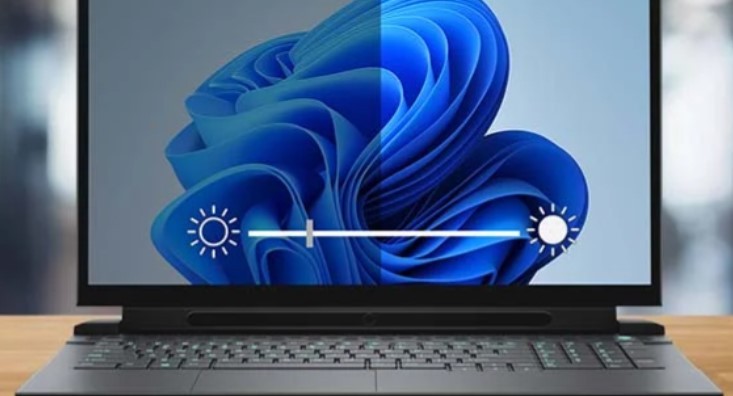
Adjusting the Brightness on Your Laptop in Different Ways
Adjusting the brightness on your laptop may be necessary depending on the lighting conditions in the surrounding area. If you have your display brightness set too low, you won’t be able to see much on it when you use your laptop outside where the sun is shining directly on it.
On the other side, if you use your laptop in a room with poor lighting, you will cause unnecessary strain on your eyes. When using it in your day-to-day life, you will consequently find that it is necessary to continually change the brightness.
Adjusting the Brightness on Your Laptop in Different Ways
Despite this, altering the level of brightness on a laptop is a rather simple process. Adjusting the brightness can be done in a number of various ways, including using the specialized brightness control keys on your keyboard or any one of a number of other techniques.
Using Dedicated Keys
Using the keys that are specifically designated for adjusting the brightness of a laptop display is the most straightforward method. On the keyboard of your laptop, the keys that adjust the brightness can be found by looking for an icon of a sun that is printed on the keycaps.
The key that controls the brightness of your laptop’s display may be on the arrow keys, placed at the top of the keyboard, or within one of the function keys. This will depend on the model of your laptop.
To make the screen brighter, click on the icon of the sun with more brightness, and to make it darker, click on the icon of the sun with less brightness. If doing so does not affect the brightness of your screen, you may need to hold the Fn key and press the keys that control the brightness while doing so.
Some laptops may also feature a symbol of a sun with a plus sign or an arrow pointing up to increase the brightness of the screen, and another icon of a sun with a minus sign or an arrow pointing down to decrease the brightness of the screen.
Also, if you wish to adjust the brightness of an external monitor that is linked to your laptop, you will need to do so from the monitor itself. This is because your laptop does not have access to the brightness controls.
The Action Center in Windows allows you to make adjustments to the brightness of your laptop as well. The Action Centre is where you’ll find some quick action settings, such as Wi-Fi, audio controls, and brightness adjustments, among other things.
To open the Action Center, tap the box that is located below the icons for the Network, Volume, and Battery. You also have the option of opening Action Center by hitting the shortcut key combination Windows + A.
Find the Brightness slider, and then either drag it to the right to make the brightness higher or to the left to make the brightness lower.
From Windows Settings
You may also change the brightness of your laptop by using the Settings software that comes pre-installed with Windows. You may also update your settings to let Windows automatically adjust the brightness to be appropriate for the surrounding environment if your laptop comes equipped with an ambient light sensor.
To open the Settings menu, press the Windows key and the letter I simultaneously.
Go to System > Display when you have finished.
Find the Brightness slider, and then move it to the right to make the brightness higher, or left to make the brightness lower.
Clicking on the Brightness slider will show the settings that were previously concealed. This is necessary if you want Windows to automatically adjust the brightness for you.
Choose the option to have the brightness adjust itself automatically whenever the illumination does. (If you don’t see this option, it’s possible that your laptop doesn’t have sensors that detect ambient light.)
Windows Mobility Center
You may also increase the brightness of your laptop by using the Windows Mobility Center, which is a feature that is exclusive to Windows-based laptops and is available to users. This is how you can accomplish that goal:
To open the Run box, press the shortcut key combination Windows + R.
To open the Windows Mobility Center, hit Enter after typing mblctr into the search box.
You can also adjust the level of brightness displayed on your screen through the Control Panel that is specific to your graphics processing unit (GPU). Your laptop’s graphics processing unit (GPU) is probably manufactured by one of these three companies: Intel, NVIDIA, or AMD.
So, you can modify the brightness of your laptop by using the Control Panel that is relevant to one of the three GPU manufacturers.
The Intel Graphics Control Panel can be accessed here.
To access the Intel Graphics Control Panel, right-click anywhere on your desktop, click the Show more choices button, and then select the appropriate option.
Go to Display > Color Settings in the menu that appears.
Choose the display monitor that you wish to modify the brightness for under the section labeled Choose Display. (If you are unable to connect an external monitor to your laptop, you should keep the display settings at Built-in.)
Adjusting the brightness of the screen is accomplished by dragging the Brightness slider to the left or right. (If you want, you may also change the value of the Contrast slider.)
- Right-click on your desktop, click on Show more options and select NVIDIA Control Panel.
- Under the Display tab, select Adjust desktop color settings.
- Choose the display of which you want to adjust brightness from the right panel.
- Adjust the screen brightness using the Brightness slider.
AMD Radeon Settings
- Right-click the desktop, click on Show More options, and select AMD Radeon Settings.
- Click on Display, and under Global Display, select the display monitor you want to change the brightness for.
- Toggle on the Custom Color option.
- Adjust your screen brightness using the Brightness slider.



